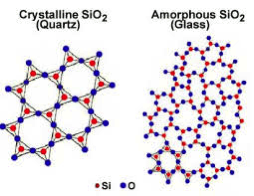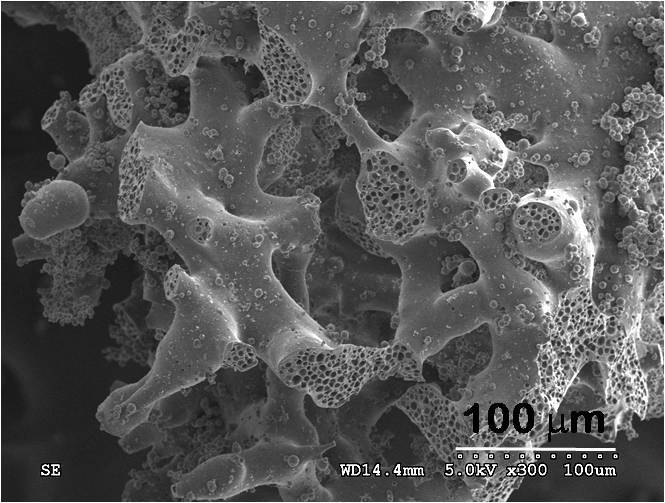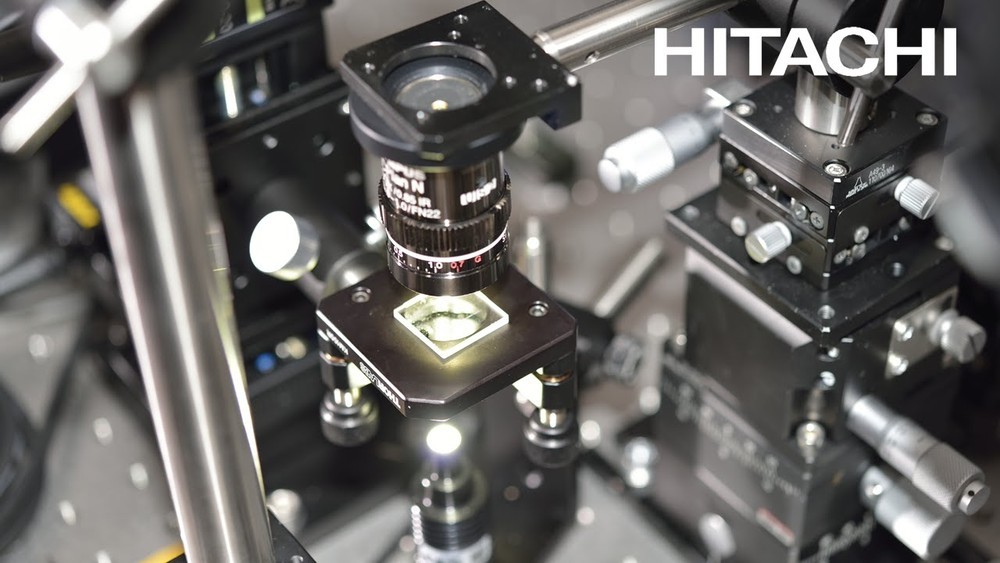How to build a future of glass

People learned how to make and process glass more than 5 thousand years ago, but so far it is surprising with the variety and capabilities of its properties. From publications in the press, it seems that the world of the future will be built on graphene, antimatter, vibranium and other unknown substances. Nothing to say about glass? As if not so. Georgy Shahgildyan, a glazier and Ph.D. in Chemistry, gave a lecture at the set up research office in the Mail.Ru Group’s office. The article was based on an article about what glass is and why it will serve us all.
What is glass?

Glass and quartz are made of silicon dioxide.
Glass is made from molten sand. Plain sand is SiO 2 crystals (silicon and oxygen). The structure of each grain consists of smooth rings with short and long order. The middle order is when the distance between the atoms of silicon and oxygen is the same, the long-range order is when the atoms and molecules have the same mutual arrangement at any point of the substance. It turns out the so-called translational symmetry .
')
In the glass there is only short range. When heated, the crystal turns into a liquid - a melt. When cooling this melt, we get a glass - some structure with a heterogeneous structure. One of the features of glass is the presence of the so-called glass transition interval: we can heat it in a certain interval and change its properties.
Glass can consist not only of silicon and oxygen. Many elements (sodium, barium, silver, yttrium, tin, calcium, etc.) are glass modifiers, giving it a variety of unique properties.

Source: wiki
One of the most famous examples of glass with a modifier is the Lycurgus Cup - a glass vessel made in the 4th century. ne The color of the cup varies depending on the lighting. So, in the reflected light it is green, and to the light - red. Previously, this feature was perceived as magic, but the whole thing is in the chemical composition of glass: hybrid nanoparticles of silver and gold impart such an optical property to glass.
What is glass used for?

Source of
The process of making glass is like cooking the soup. First, take the ingredients - different crystalline materials: soda, sand, some additional oxides. All this is mixed and placed in a special container - crucible furnaces or huge glass melting furnaces. A mixture of substances is poured into them and heated to a temperature of 1500-1700 o C.
Remember the glass transition interval? This is the temperature interval within which we can do something with glass, give it some form. You can create bottles, window glass and even glass that cure cancer — microballs that contain radioactive yttrium. The doctor injects a portion of the microspheres into the affected organ, where they are evenly distributed due to the circulatory system and destroy the cancer cells with radiation. At the same time, micro sources of radiation block vessels (the so-called embolization - medical blockage) and do not allow nourishing cancer cells.

Microgranules with yttrium-90 are inserted into the liver artery.
It is possible to fill microballs not only with yttrium - any necessary medicine is placed in granules and injected directly into the affected organ or applied to the skin surface. Gradually releasing the drug, they ensure its long-lasting effect. The number of microgranules is so small that they in no way have a negative impact on the life and performance of the affected organ.

Source of
There is a kind of glass that Swarowski really likes. The manufacturer writes that these are crystals, but in fact this glass is high in lead (30%), which is not very useful. But thanks to lead glass shines so beautifully.

Like human bone, bioactive glass has a porous structure.
There are glasses from which bones can grow. On a 3D printer, Scaffold structures are printed from special bioactive glasses. They penetrate directly into the damaged part of the bone and osteoblasts and other cells grow on them. The result is a new bone, and Scaffold itself is dissolved, as it is a biodegradable glass. In the process of dissolution, the material releases calcium and other substances that stimulate bone growth.
There are glasses in which DNA is made - these are special nanoporous glasses in which various oligonucleotides can be planted.
Glass as a data carrier

If there were no glass, we would not have the Internet. To transfer traffic over copper wires, we would need a myriad tons of copper, and still nothing would have happened because of the resulting electrical resistance. Fortunately, there is a fiber on which all serious data networks are built.
But how to keep an abundance of information that we constantly generate? Today, data is stored on a very trivial means - on HDD-drives, flash drives, CD, DVD, tape drives, and all of these media have limitations.
In fact, this is a big problem, because paper carriers are imperfect, and electronic and magnetic ones quickly degrade, become obsolete, and due to the high concentration of information, the death of even one disk leads to the loss of a large amount of data. In addition, all sorts of libraries, archives and funds have to spend a lot of electricity (and funds) to maintain the work of their digital archives.
More content is being created, and it is estimated that by 2020, humanity will have accumulated 35 zettabytes of data. And how much content do we not even have time to save?
Glass is able to solve all these problems. It can be stored for a long time - glass has been found several thousand years old. And quartz glass will be stored almost forever (more than 300 million years, to be exact), it is not particularly exposed to high temperatures (can withstand up to 1000—1100 o C). A few years ago, scientists from the University of Southampton managed to successfully record and read information in quartz glass.
In general, if we record information in glass, then it will be well preserved. This can be done by analogy with a CD-disk, when pits are placed on the plane: 1, 0, 1, 0. There is a point on the surface - this is 1, there is no point - 0. If this is done not on the plane, but in three-dimensional space , then the storage volumes will be much more. For example, Blue-Ray discs consist of three or more layers. But if you take the glass as a transparent carrier, you can do much more.
Since 2009, Hitachi has been developing technology for creating 50 bilateral layers in a glass volume, that is, 100 data storage layers are obtained. Special femtosecond laser allows you to very quickly change the focus on different layers. The technology today gives a total capacity of 1.5 GB per 1 square inch.
It turned out that if we use laser radiation of increased power, then inside the pit points created in the glass by a laser, nano-grids are formed. These are structures with a birefringence effect. What this means: if the beam passes through this nano-lattice, it will change its polarization, and we can quantify what happened to it. Then we can add an additional parameter to each point.
That is, the point in the glass itself is one bit. And with the help of additional physical parameters, 2, 3, 4, and even 5 bits can be recorded at one point. Thus, an ordinary glass disk can store up to 200 terabytes of information for thousands of years. It is safe to say that in 20-25 years, huge amounts of information will be stored in glass.
Source: https://habr.com/ru/post/394995/
All Articles